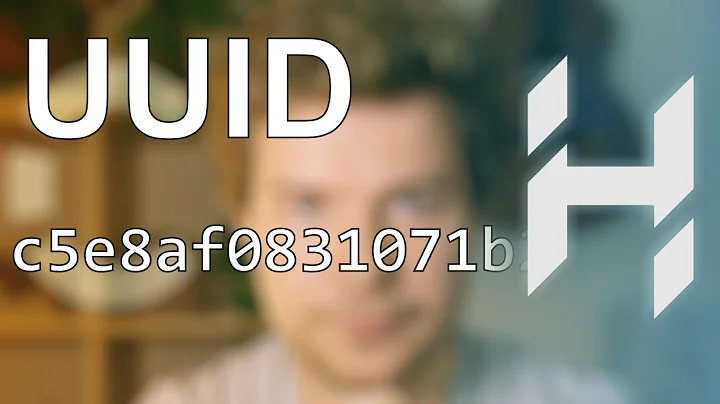What is a UUID?
Solution 1
It's an identification number that will uniquely identify something. The idea being that id number will be universally unique. Thus, no two things should have the same uuid. In fact, if you were to generate 10 trillion uuids, there would be something along the lines of a .00000006 chance of two uuids being the same.
Solution 2
Standardized identifiers
UUIDs are defined in RFC 4122. They're Universally Unique IDentifiers, that can be generated without the use of a centralized authority. There are four major types of UUIDs which are used in slightly different scenarios. All UUIDs are 128 bits in length, but are commonly represented as 32 hexadecimal characters separated by four hyphens.
Version 1 UUIDs, the most common, combine a MAC address and a timestamp to produce sufficient uniqueness. In the event of multiple UUIDs being generated fast enough that the timestamp doesn't increment before the next generation, the timestamp is manually incremented by 1. If no MAC address is available, or if its presence would be undesirable for privacy reasons, 6 random bytes sourced from a cryptographically secure random number generator may be used for the node ID instead.
Version 3 and Version 5 UUIDs, the least common, use the MD5 and SHA1 hash functions respectively, plus a namespace, plus an already unique data value to produce a unique ID. This can be used to generate a UUID from a URL for example.
Version 4 UUIDs, are simply 128 bits of random data, with some bit-twiddling to identify the UUID version and variant.
UUID collisions are extremely unlikely to happen, especially not in a single application space.
Solution 3
UUID stands for Universally Unique IDentifier. It's a 128-bit value used for a unique identification in software development. UUID is the same as GUID (Microsoft) and is part of the Distributed Computing Environment (DCE), standardized by the Open Software Foundation (OSF).
As mentioned, they are intended to have a high likelihood of uniqueness over space and time and are computationally difficult to guess. It's generation is based on the current timestamp and the unique property of the workstation that generated the UUID.
 Image from https://segment.com/blog/a-brief-history-of-the-uuid/
Image from https://segment.com/blog/a-brief-history-of-the-uuid/
Solution 4
It's a very long string of bits that is supposed to be unique now and forever, i.e. no possible clash with any other UUID produced by you or anybody else in the world .
The way it works is simply using current timestamp, and an internet related unique property of the computer that generated it (like the IP address, which ought to be unique at the moment you're connected to the internet; or the MAC address, which is more low level, a hard-wired ID for your network card) is part of the bit string.
Originally every network card in the world has its own unique MAC address, but in later generations, you can change the MAC address through software, so it's not as much reliable as a unique ID anymore.
Solution 5
Related videos on Youtube
Comments
-
Juha Syrjälä almost 4 years
Well, what is one?
-
James McMahon about 15 yearsYou should also note that a GUID is the same thing.
-
skaffman almost 15 yearsWell, a Microsoft GUID is the same thing.
-
 Dave about 12 yearsGood info and generator here: online UUID generator
Dave about 12 yearsGood info and generator here: online UUID generator -
 Ja8zyjits over 8 years@Dave that link was enough to answer this question.
Ja8zyjits over 8 years@Dave that link was enough to answer this question. -
 Milan over 3 years@Dave online UUID generator links seems broken.
Milan over 3 years@Dave online UUID generator links seems broken.
-
-
Lucas Castro almost 3 years"So you're telling me there's a chance!"
-
 Rakesh Gupta over 2 yearsProbability of a collision will never be 0
Rakesh Gupta over 2 yearsProbability of a collision will never be 0




